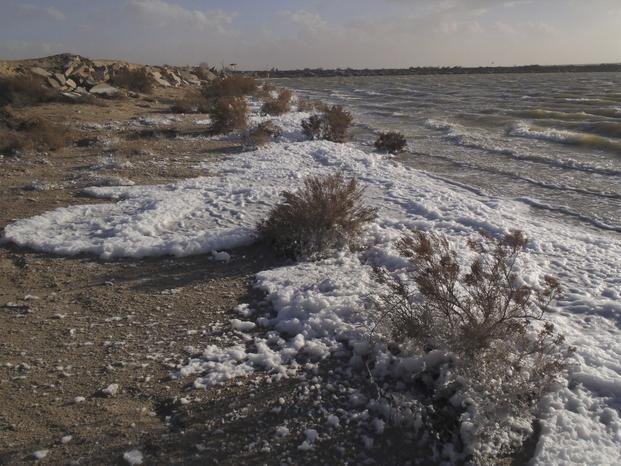Concerns Rise Over PFAS in Wildlife Near Holloman Air Force Base
A growing environmental concern has emerged in New Mexico as state officials report alarming levels of harmful chemicals, known as PFAS, in wildlife and plants near Holloman Air Force Base. These substances, notorious for their persistence in the environment and potential to cause cancer, were detected in various samples including birds, small mammals, and plant life at a nearby lake.
Research commissioned by the state revealed that the levels of PFAS found are among the highest documented globally in wildlife and plants, according to comparisons with existing studies. The analysis involved testing muscle, liver, and bone tissues in ducks, other bird species, and rodents, along with eggshells, algae, and even snake skin.
This discovery aligns with a broader trend where states across the U.S., from Maine to Michigan, are increasingly issuing health warnings due to PFAS contamination in wild animals traditionally hunted for food. The chemicals, or per- and polyfluoroalkyl substances, are a growing concern among public health and environmental entities because they persist in the environment and can accumulate in human blood over a lifetime.
In New Mexico, attention is focused on a lake that acts as a wastewater reservoir for Holloman Air Force Base, located near White Sands National Park. Although hunting is prohibited in this area, officials worry that migratory birds using the lake as a stopover might be hunted elsewhere, posing a risk to those who consume them.
“The levels of PFAS contamination in Holloman Lake are deeply concerning, particularly for hunters who may have consumed waterfowl from the area over the past decade,” expressed Miranda Durham, medical director for the New Mexico Department of Health.
The newly released report aims to influence federal actions amidst ongoing legal disputes over cleanup efforts at Holloman and Cannon Air Force Bases in New Mexico. Much of the contamination stems from the use of firefighting foam during training exercises, a common issue at numerous military sites across the country that experts predict will require billions of dollars and years to address.
The study underscores the necessity for further testing of waterfowl and oryx samples to better assess the risk to hunters near the contamination zone. Tasha Stoiber, a senior scientist at the Environmental Working Group, highlighted the alarming yet unsurprising levels of PFAS at the lake, noting their widespread presence in products like nonstick cookware.
“These chemicals accumulate in the body over time, creating serious long-term health risks, including cancer, developmental harm and immune system suppression,” Stoiber remarked.
Elsewhere in the U.S., Maine’s wildlife agency collaborates with universities to track deer and turkey, assessing how their movements might affect PFAS exposure. The state has issued advisories in certain areas due to historical use of contaminated fertilizers, although officials stress that the issue isn’t yet widespread.
New Mexico officials emphasize the broader implications of PFAS contamination for the state’s ecosystems, which are integral to its cultural and economic fabric. Matthew Monjaras, a veteran hunter and leader of the nonprofit Impact Outdoors, acknowledges the potential risks but equates them to those posed by consuming store-bought meat or fish.
“We’re a product of our environment,” Monjaras stated, reflecting a pragmatic view on the pervasive presence of PFAS in the food chain.












Be First to Comment